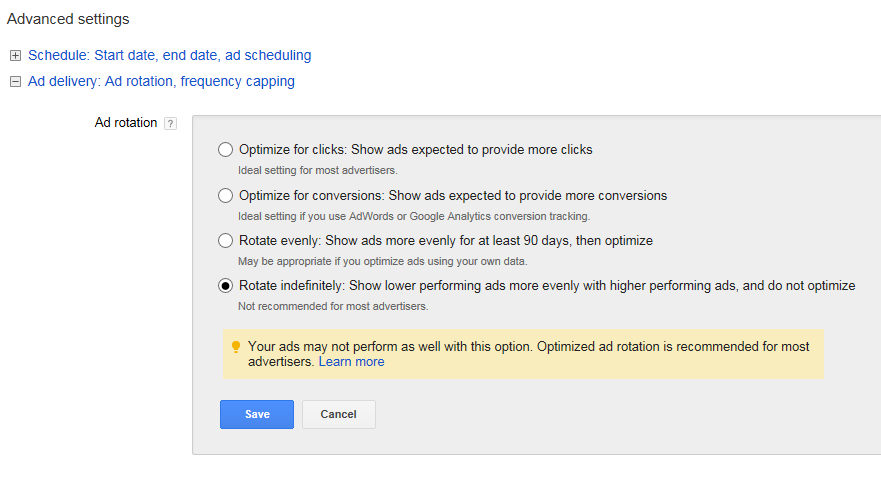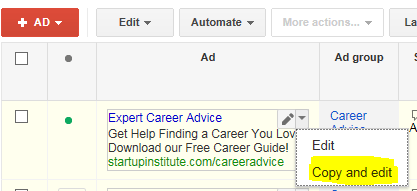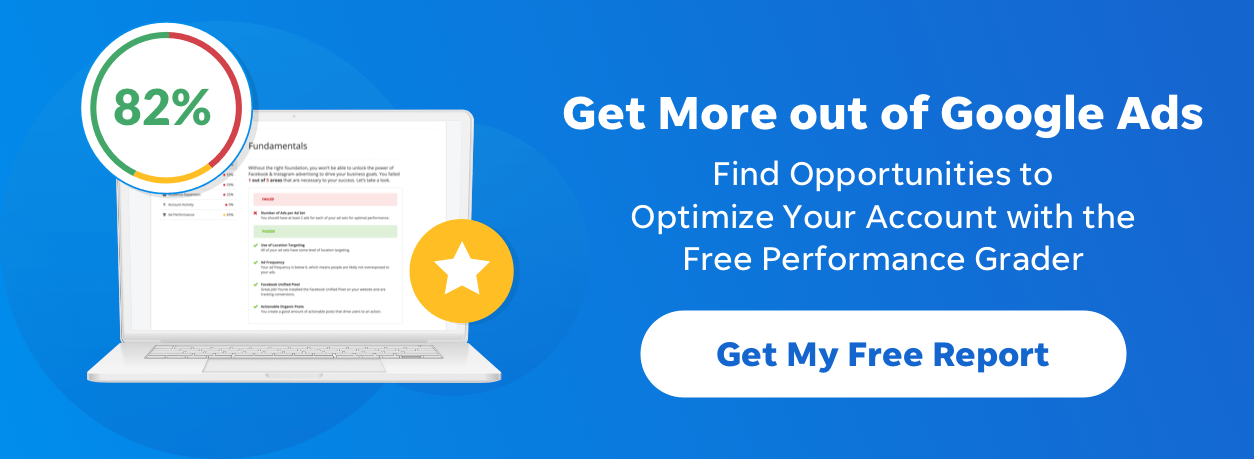
3 Game-Changing PPC Tips for Un-Glamorous SaaS Offerings
SaaS! It might be fun to say, write down, and read on paper, but SaaS isn’t all that glamourous. It’s software as a service after all. Woo freakin hoo… I say this as I’m writing for a software company so don’t get me wrong, I believe in the power of software services like WordStream, Salesforce, GoToMeeting, and all of the other SaaS systems that I spend my days slaving away in…I mean productively working in.
For many of us, software has become a huge part of our lives. Think about it, the average worker spends 46.7 hours a week working, according to a recent Gallup study. I’m guessing the average marketer and sales rep spends a huge chunk of that time in the trenches of a software system. And let’s face it, well-built software is powerful, and actually makes our lives much easier.
As a software marketer, I truly understand the challenges of marketing in the B2B and specifically SaaS space. The sales-cycles are longer, competition and comparison shopping is inevitable, and measuring return on investment is a challenge.
Why is PPC Important for SaaS Marketers?
Paid search has become a critical component of the sales cycle when it comes to discovery of a SaaS system for a potential buyer. When an employee has a problem, he or she hops on Google to find a solution to that problem, and well, hello there! The searcher is greeted at the top of the SERP with your beautiful software solution, discretely screaming “Click me! Give me your email!”
Recently I had a productive conversation with Richard April, the Senior VP of Marketing at Repsly. Repsly offers mobile software solutions for enhancing field activity management, and despite its recent birth in 2010, they’ve seen noteworthy growth with customers in 40 countries. They even have engineers stationed in Croatia (how cool is that)!
Richard explained the critical role paid search has played in gaining leads in their longer and challenging sales cycle. “The journey (of a lead) typically starts with PPC. They’re searching for something, either directly relating to the problem or attempting to answer a question,” says Richard. “This gives us the opportunity to engage them with content, categorize them into a workflow in order to present them with similar content to their initial interest, and continue to drive them down the path to demoing, trialing, and becoming a paying customer. PPC has proven absolutely critical to expose our brand to new potential customers.”
3 Tips to Attract Qualified Leads to Your SaaS Services
SaaS marketers, listen up! There’s a lot you can learn from Richard, and I’ve outlined a few strategies to incorporate into your PPC efforts to stop getting irrelevant clicks and site visits and start attracting the traffic that matters (aka the traffic likely to get make you more money $$$).
Take an Educational & Problem-Solving Approach to Your PPC strategy
Have you ever walked into a store and been bombarded by an aggressive sales person? “We have this discount! And that discount! What are you looking for?! How can I help!?” Your fists are clenching as you use every ounce of your will power to politely respond, “Oh, I’m all set. Just browsing.”
We’ve all been there, and this is somewhat equivalent to how searchers feel when they’re bombarded with sales pitches in the SERPs. More than likely, the searcher isn’t ready to buy, they’re simply trying to learn more about a certain topic or answer a question. Why would they buy if they’re not even sure of what they need or want? There’s also often no brand recognition and therefore trust still needs to be built.
Richard figured this out fairly quickly in his own paid search efforts, and instead of shoving aggressive offers in his leads’ faces, he’s taken a more educational approach. “We provide a lot of very helpful thought leadership content – templates, toolkits, e-books, basically anything to help them become more successful,” says Richard. “Then when they do need a tool like Repsly, they’re thinking of us because they have read our white papers or templates. We’ve carried this approach over to our AdWords strategy, providing them with quality, educational content, rather than advertising in a direct, in-your-face way.”
So how do you ensure you’re not over-selling on the Google search page? Follow these tips:
- Bid on “problem” keywords: Think about the most common issues your audience experiences, and the main reasons they would turn to you. Perhaps your customers are struggling with time-management for social media, therefore bid on “faster social media management,” or “social media marketing workflow.” Bid on problem/solution keywords rather than more aggressive terms like “buy now” and “purchase.” Take time writing down common questions you receive, and then put yourself in the shoes of your searcher to get an idea of the keywords you should be bidding on.
- Direct your ads to “solution” content: Group your keywords in ad groups with different problems that direct to an ad addressing a solution for that problem (without giving that solution away because you need that click!). Then ensure your landing page provides an educational piece of content to help solve that problem, whether that be an e-book, downloadable guide, etc., but make sure there’s a method of capturing the lead’s contact information before offering up the content. See the Repsly example below of an educational, non-aggressive offer.
Why does this approach work? Well, it’s simple. Your audience needs to trust you before making a financial commitment. You use your out-of-this-world content to gain that trust. Once trust is built, there’s really not a chance that a competitor can come and sweep them off their feet with a similar offering. Instead, they’ll think, “Yes! I need a solution like that, and I know the perfect company.”
“I’m not sure that aggressive selling really works. Instead you should really endear and validate yourself to your audience,” says Richard. “Explain to your leads, ‘We know what we’re doing, we want to help, and we also have a great toolset to help you be more successful.’”
Use Ad Testing to Ensure That You’re Not Attracting the Wrong Audience
The trouble with Google’s Search Network is that there is no easy way to target the “right” audience. Unfortunately, you can’t set “B2B” vs. “B2C” filters or target just doctors or 40- to 60-year-old males that love Justin Bieber (I’m not sure why one would want to do that…). This is why testing is so critical to make sure your keywords are correctly matching your ads, but also to ensure that the message in your ad is resonating with your audience and leading them to click through and convert.
Richard has found ad testing to drastically improve the performance of his ads. “We’re constantly testing and tweaking the message in our ad to make sure we don’t get the wrong audience,” he says. “Ad copy is not something to set and forget, but something to be perpetually tweaking and refining.”
So, how do you test more accurately? Well, first you’ll want to make sure you’re running at least 2-3 ads within each ad group. Then:
- Ensure that your ads are rotating evenly or indefinitely: You can find this by going into a Campaign’s “Settings”à “Advanced Settings”à “Ad Delivery” section within AdWords, but it’s critical to make sure you’re rotating evenly or indefinitely so that your testing isn’t skewed by one ad being served up much more frequently than the other.
- Make sure that you have enough data before making changes: I would recommend allowing your ads to each gain at least 30-60 clicks before making any substantial changes to optimize an ad.
- Copy the old ad, and then pause it instead of simply making changes to a running ad: Don’t just hop in and start making changes to an older ad. It’s true that the data will reset if you make changes, but you probably don’t want to lose that data so duplicate the underperforming ad, pause the one that was running, and then make tweaks to the duplicated ad.
Remarketing is Your New Best Friend
You didn’t know? Yikes… that’s awkward…Well, now you know, Sarah’s no longer your “best-friend,” remarketing is!
Glad that we cleared that up.
Remarketing works famously for almost any industry with a longer sales cycles, and SaaS certainly falls under that category. It allows you to easily follow around visitors that have already been to your site. This will allow your ads to pop up when a previous visitor is browsing other web content. Yes, it sound a bit like stalker behavior, but it’s not (well, it sort of is, but it works!). Remarketing is basically just an affordable method to ensure that past visitors don’t forget about you, and encourage them to return.
“We’ve seen exceptional results with remarketing,” says Richard. “We try to hit almost everyone with generic stuff for more generic pages, but if they’re further down the funnel, we cater our ads to offerings that are in-line with that.”
Richard also recommends keeping ads visually engaging with all display advertising, including remarketing. “We only use visuals that are very consistent with our own branding, for example screenshots of our mobile app,” says Richard. “We’re hoping that a consistent visual aspect refreshes their memory of our website.”
So, where should you start? I would recommend implementing an “All Visitors” remarketing campaign with some branded, non-aggressive type ads, and then as you get more familiar with the flavors of remarketing utilize a strategy to target users who have visited certain pages or completed certain actions to serve them ads which are more in-line with where they are in the sales funnel.
Check out WordStream’s remarketing guide to learn how to get stalking, I mean started.
Alright SaaS marketers, it’s time to stop pouting about how SaaS marketing is so tough, and start creating paid search campaigns that actually yield a huge return on your ad spend (ROAS). Good luck!
Meet The Author
Margot Whitney
Margot is a content marketing specialist at WordStream and nutrition graduate student at Framingham State. She loves all things digital, learning about nutrition, running, traveling, and cooking.
See other posts by Margot Whitney
More Articles Like This
Comments
Please read our Comment Policy before commenting.











